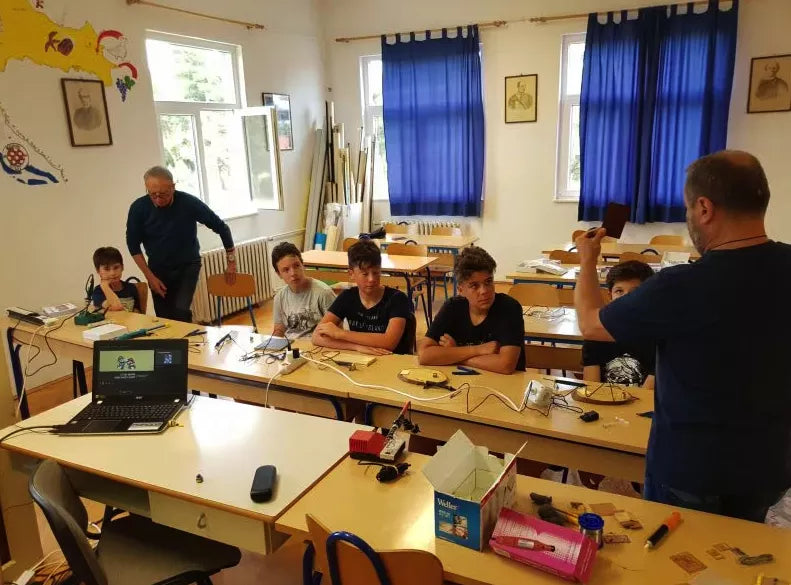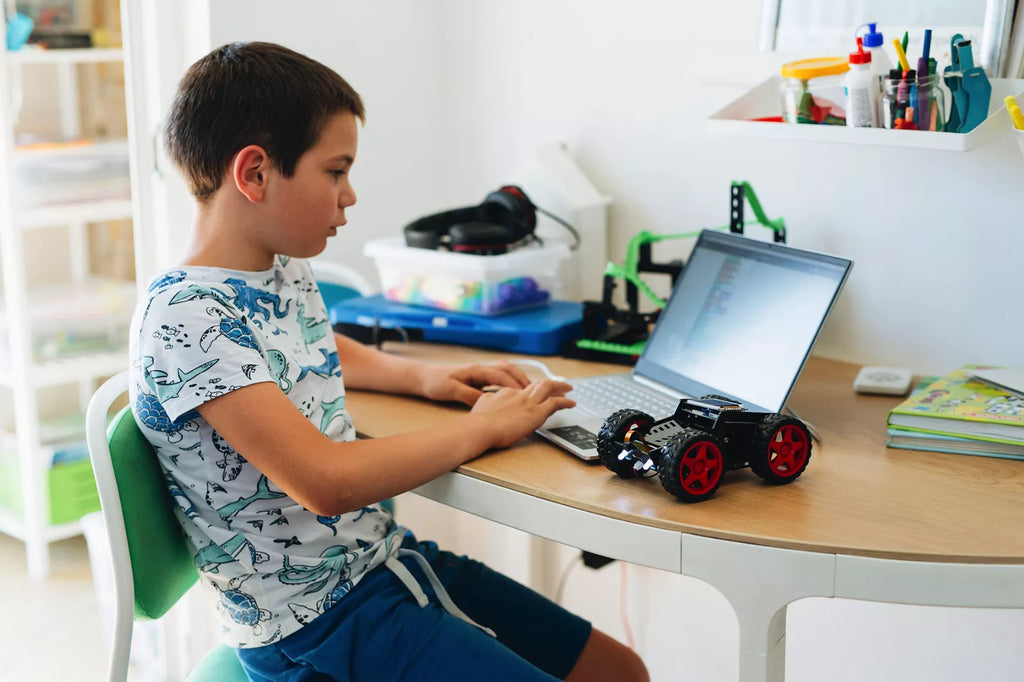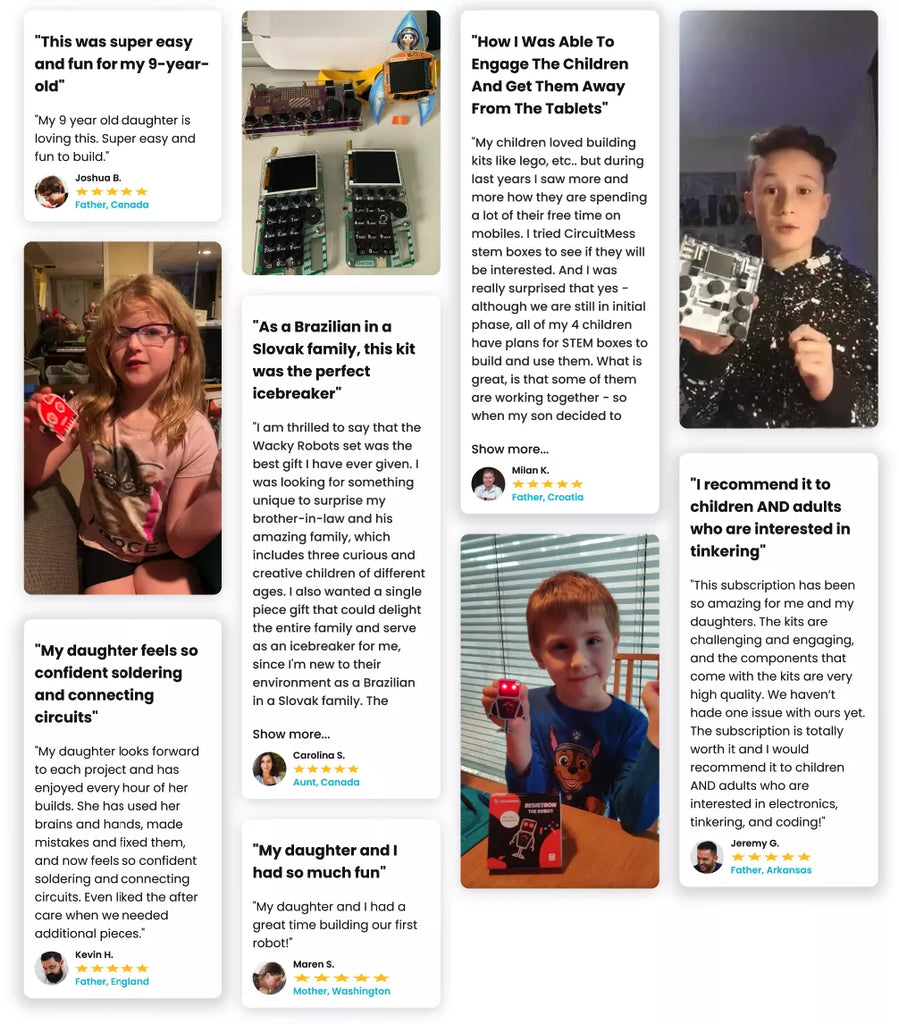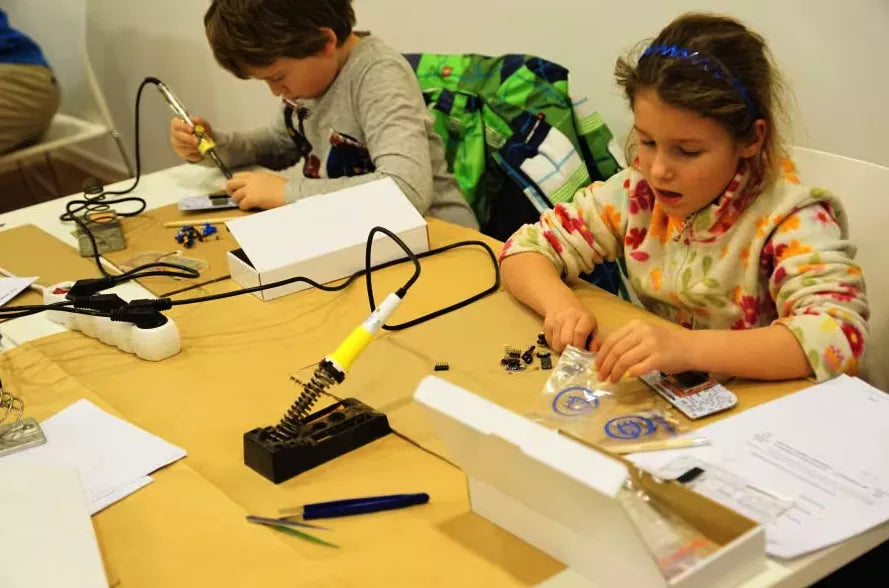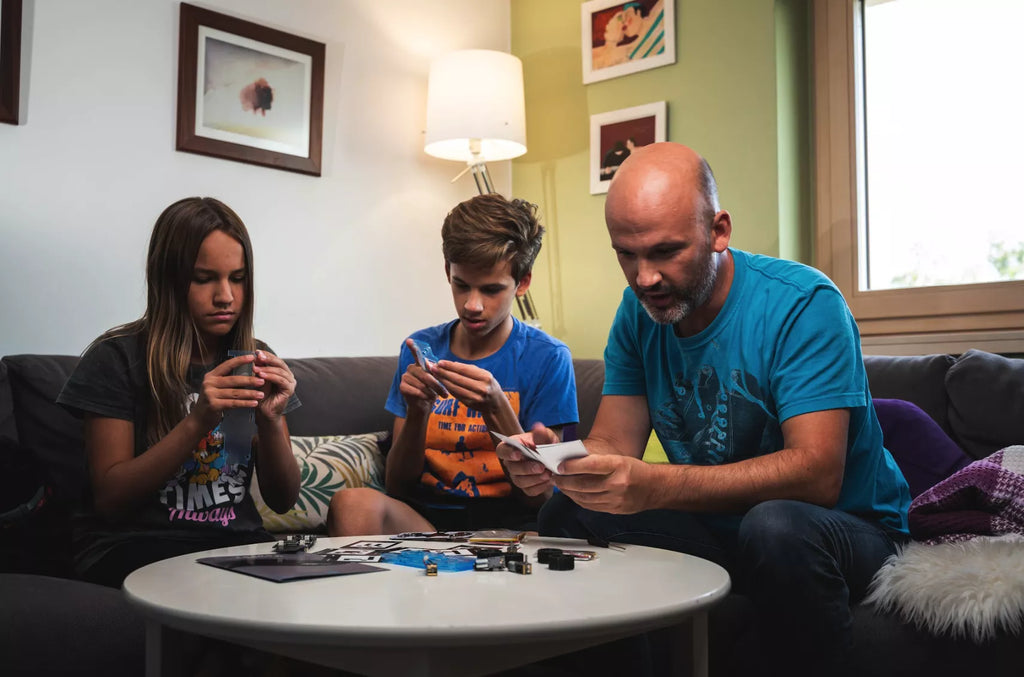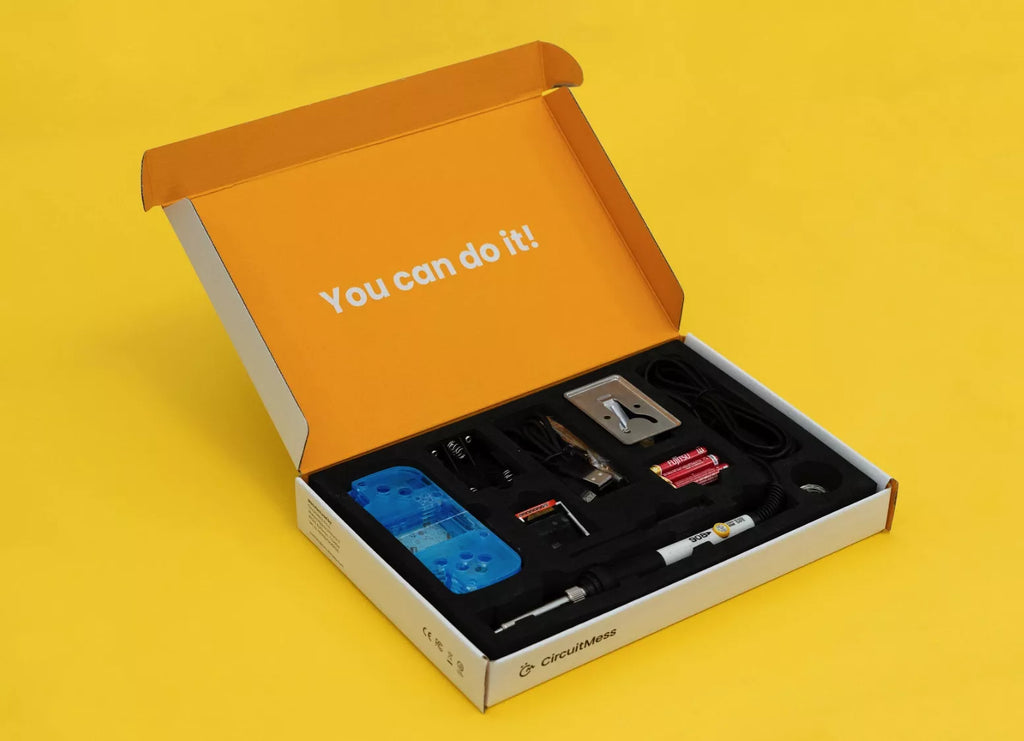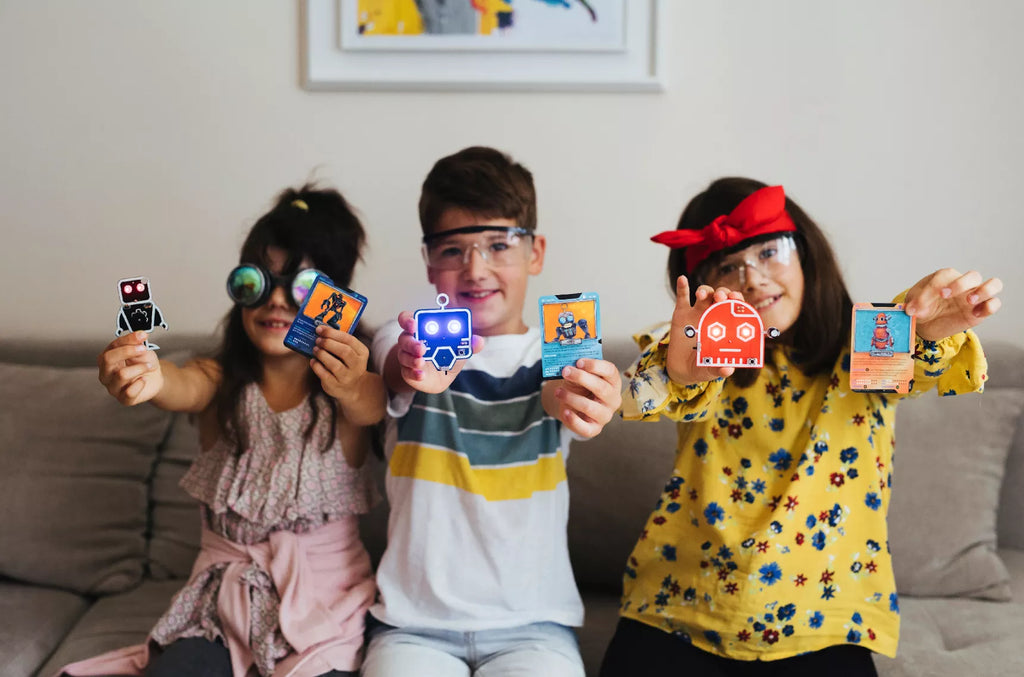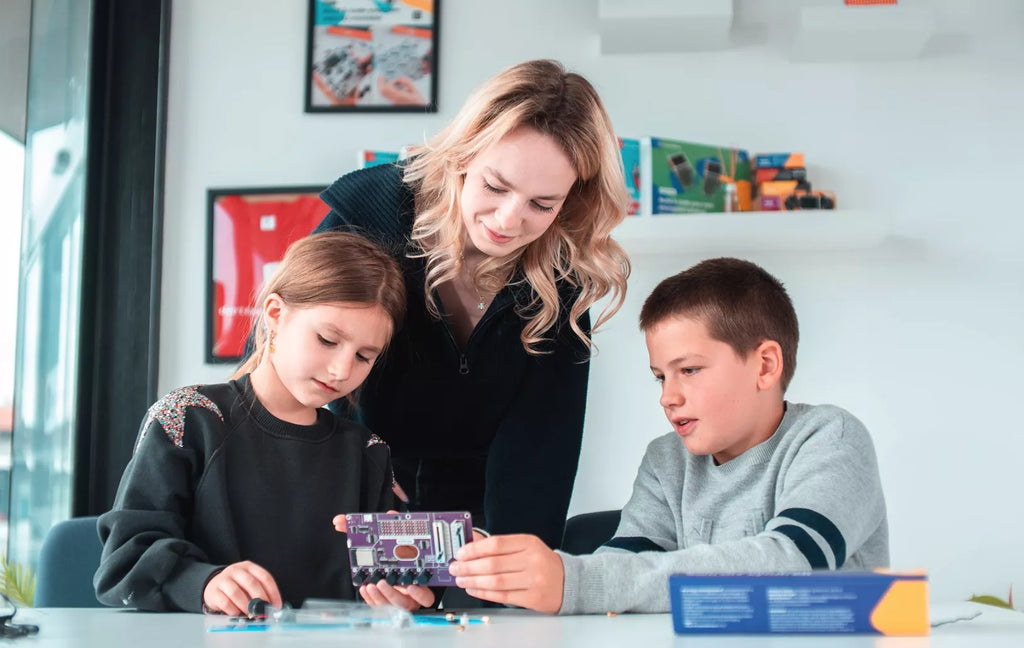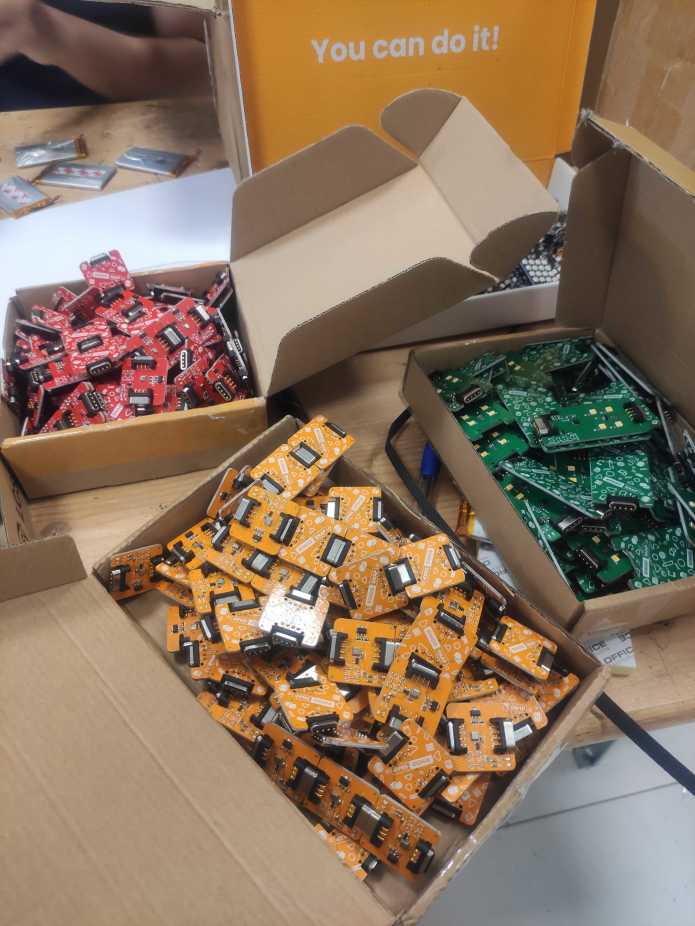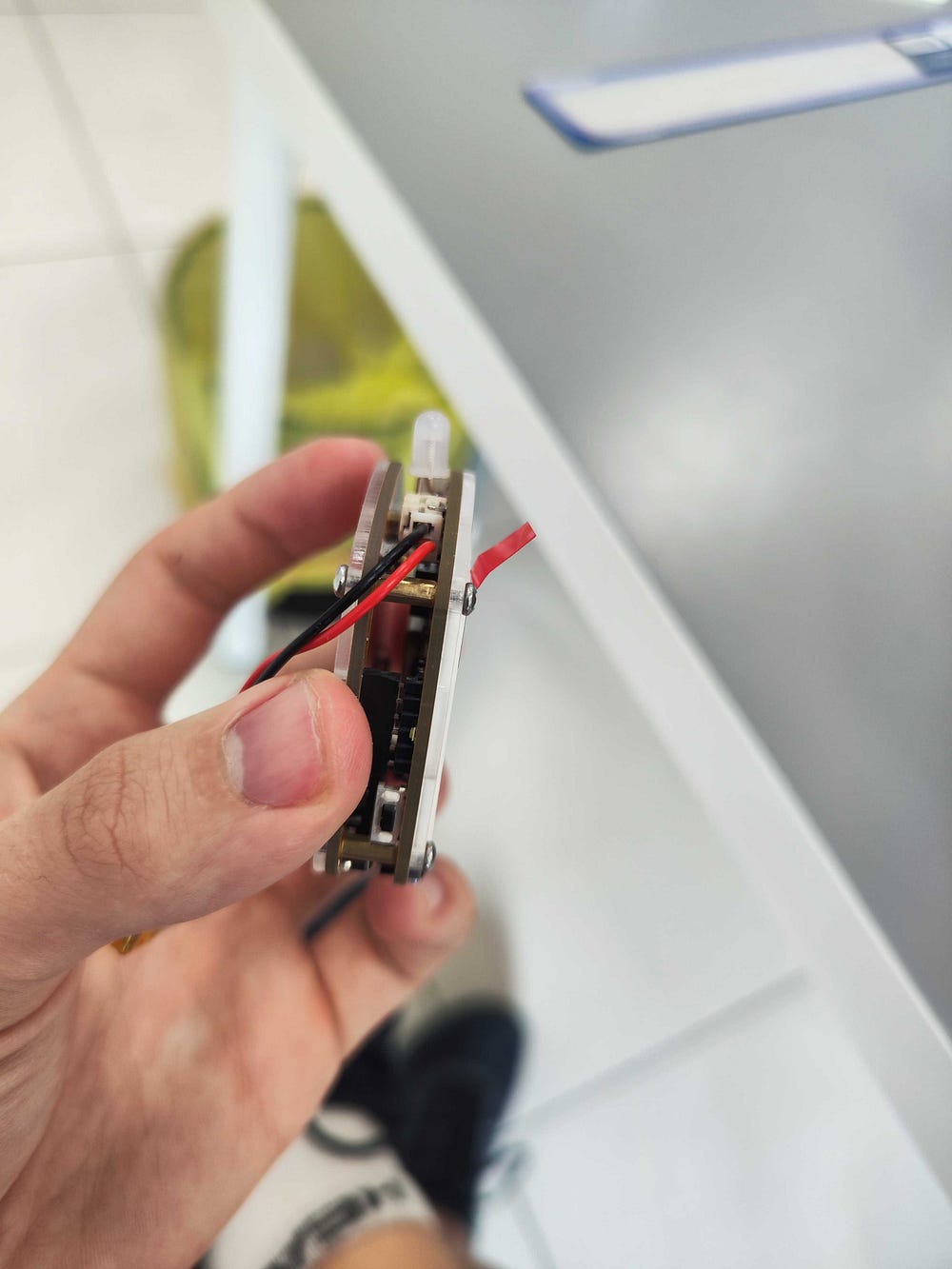So you want to enhance the STEM learning experience of your students, but the money is tight?
Welcome to the world of STEM grants, funds, and awards.
We'll guide you through everything you need to know to fund your scientific programs and start supporting education of your little scientists straight away. You'll see that access to funds helps fill potential educational voids, whether you're teaching in private schools, public education, summer workshops, or in afterschool programs.
The main challenges of STEM funding
Quality STEM education requires up-to-date materials and technology to be effective. You can't keep teaching science, technology, engineering, and math using outdated resources and expect students to be prepared for the challenges and opportunities of the modern world.
However, computer science equipment, engineering kits, and scientific tools cost money, which not all primary and secondary schools have readily available.
And for educators teaching low-income students or kids in underserved communities, the struggle is even tougher.
Yet, with the growing awareness and support for STEM education, there's a wave of opportunity for securing funding. Let's see how you can bring top-notch scientific programs to your school!
Understanding the STEM funding landscape
Whether you're looking for ways to fund high-tech classroom equipment or innovative afterschool programs, you have to know what options are there. We'll now walk you through the types of STEM program funding opportunities and show what criteria you have to meet to get them.
Types of STEM programs funding opportunities
Remember, your funding opportunities depend on your location. We'll list information for the United States here, but there are similar opportunities available worldwide. If you're outside the USA, it's a good idea to check with your local education authorities for region-specific funding options tailored to your STEM program's needs.
That said, let's see what options there are.
State funding
Many states offer specific grants for STEM education. These can range from supporting science fairs to integrating technology in classrooms. For example, a state might offer a grant to implement robotics programs in middle schools.
Not sure what your state has to offer?
Then you should check out this STEMfinity tool that lets you click on your state and see all the grants and funding options available specifically for your area.

Image source: STEMfinity
Federal grants
The U.S. government, through agencies like the National Science Foundation (NSF) and the Department of Education, provides substantial funding for STEM initiatives. These grants often focus on large-scale projects or research, like an NSF grant for developing new engineering curricula.
The Department of Education federal grant program encourages providing students with "high-quality STEM education for all students from PreK to higher education, regardless of background."

Image source: U.S. Department of Education
Federal grants like these are particularly important for fostering inclusivity and equity because they often prioritize underrepresented groups and underserved students.
Corporations
Big tech and engineering companies often offer STEM funding as that encourages students to possibly explore a future career in the industry. This is not just about one-off donations—many corporations work with non-profits to secure long-term investments.
For instance, the automotive manufacturer General Motors has partnered with DonorsChoose, AI4ALL, Benetech, and others to provide immersive STEM learning activities and curricula to diverse groups of students.

Image source: General Motors
Don't forget that you don't necessarily have to turn to giant corporations for funding. There may be local tech companies in your area that also offer grants, equipment, or mentorship programs.
Foundations and non-profit organizations
Numerous private foundations are dedicated to advancing STEM education. The Simons Foundation, the Amgen Foundation, and the Gates Foundation are just some of the big names that contribute to the cause.

Image source: The Amgen Foundation
Note that foundations often award grants to non-profit organizations dedicated to education, rather than funding individual schools or educators.
Eligibility and requirements for STEM education grants
Not all STEM education grants follow the same set of rules and requirements, so you'll have to explore the specifics of the ones you're interested in applying for.
For example, the Society for Science requires applicants to be mission-driven nonprofits aligned with STEM education, advocate for public STEM understanding, and serve at least 25 people in the U.S. with their programs.

Image source: Society for Science
Other common criteria include:
-
Organizational eligibility: Often, grants specify the type of organizations that can apply, such as K-12 schools, colleges, public schools, charter schools, or non-profits.
-
Program focus: The focus of your STEM program should match the grant's focus, whether it's general science education, computer technology integration, engineering research, or math initiatives.
-
Geographic restrictions: Some grants are specific to certain regions, states, or communities, so location can play a big role in eligibility.
-
Target audience: Many grants aim to support specific groups of students, like underrepresented groups, racially diverse student populations, girls, or low-income students.
-
Project goals and outcomes: Grants often seek programs with tangible, impactful outcomes, so it's best to plan your program's objectives and how you plan to measure success.
-
Budget and financial need: You might need to provide a detailed budget and justify the financial need for your project.
Making sure you're eligible for the STEM education grants you're applying for before you actually apply will prevent you from wasting hours writing applications in vain. So, read each grant's requirements carefully!
Identifying the right STEM grants
Of course, the varying requirements of different grants will narrow down your selection. But don't worry!
That's a good thing, as it will allow you to focus on pursuing grants that have the greatest potential to support your STEM education goals effectively.
Identifying the right STEM grants for you should start by defining your objectives. What are your goals, and what specific outcomes do you aim to achieve? Knowing your program's purpose will guide you to grants that share similar aims.
Studying the requirements in detail should be your next step.
Then, it's a good idea to explore past awardees. Fortunately, most funding providers are proud to display their previous grant recipients, making your journey easier.

Source: Society for Science
Understanding who has been successful in securing funding can show you what kinds of programs and initiatives resonate with grantors.
This knowledge can help you fine-tune your grant applications to align more closely with the preferences of funding organizations, increasing your chances of success.
Crafting a winning proposal
Once you've chosen the grant to pursue, the next crucial step is crafting a proposal. Your proposal is your opportunity to convince the grantors that your STEM education program deserves their support.
Ideally, it will be followed by a formal grant application, as outlined in the grant writing process diagram you can find below.

Image source: University of North Carolina
As you can see, by the time you're in the proposal writing stage, you should have your needs and budget already figured out. These are the bases that clearly communicate the value of your program to potential grantors.
However, sending a sheet with estimates won't cut it. To make your grant proposals worth accepting, you need to follow strict formatting rules and include the right content, sprinkled with a bit of storytelling. We have some great tips for you in the next section.
How to write a compelling grant proposal to get your STEM program funded
Just like with the question of eligibility, each grant has its own unique requirements when it comes to the proposal format.
To provide you with a specific, real-life example, we'll examine the proposal preparation instructions from the U.S. National Science Foundation.
Essential components of a grant proposal
It all starts with knowing what you have to prepare. Below, you'll see an NSF-prescribed checklist of the essential components of grant proposals.
You can also apply it to other grants that don't have specific requirements, so that you don't have to freestyle your proposal.
-
Project summary (1 page)
-
An overview of your proposed activity
-
Statements on its value and broader impacts
-
-
Project description (up to 15 pages)
-
What you want to achieve
-
Why it's important
-
How you plan to accomplish it
-
How you will measure success
-
Potential benefits if successful
-
-
References cited
-
Bibliographic citations related to your project
-
-
Documents required for senior personnel
-
Biographical sketch (3 pages) outlining qualifications
-
Current and pending support for ongoing projects
-
Collaborators and affiliations
-
-
Proposal budget and justification
-
Detailed budget by category
-
Justification for each budget item (up to 5 pages)
-
-
Facilities, equipment, and resources
-
Description of available resources
-
Both internal and external support for the project
-
-
Data management plan (up to 2 pages)
-
Explanation of how research results will be shared
-
While writing these specifics, you can't get creative just yet. In fact, many grants have strict rules about formatting, spacing, fonts, and other technical details, like in this bit here:

Image source: NSF
However, it would be wrong to take a formulaic approach to writing the body of the proposal. The way you present your STEM program can greatly enhance your proposal's persuasiveness.
Building a strong case
Remember, there are many science teachers across school districts, and only a limited number of grant opportunities. That's why your proposal has to stand out.
An effective way to achieve this is to simply tell your story.
Instead of listing facts, you should describe how your STEM project came into existence, the challenges it aims to address, and the vision you have for it. An anecdote or two will make your proposal more personable, so don't shy away from describing past student success stories or even an odd classroom mishap.
Next, keep in mind that your program sounds more plausible when you acknowledge possible challenges transparently. So, list some, and say how you plan to overcome them. Grantors appreciate honesty and well-thought-out solutions.
Lastly, remember to visualize your message. Use images, charts, graphs, or infographics strategically to illustrate key points and data.
While these strategies can't turn a bad proposal into a successful one, they certainly can elevate a strong proposal and increase its chances, so make sure you apply them!
Strategies for success in getting your STEM education grants
Okay, now you know how to nail formatting and writing a proposal. But there are two additional elements that can help you secure funding, and you should be careful to include both in your proposal.
Collaborating with community partners
As we've mentioned earlier, some national institutes and foundations only award grants to non-profits that aim to improve education.
Whether you're applying for such a grant or not, it's wise to build partnerships with other organizations dedicated to the same goal.
Partnering with elementary schools, secondary schools, organizations in local communities, or experts in youth education can strengthen your proposal. Therefore, you should highlight how these collaborations enhance the impact of your STEM program.
Focusing on outcomes
Nobody likes giving away money just because of it. Funders want to see results and positive impacts from their investment, which is why you should emphasize the specific outcomes of your program.
So, when describing an outcome, you should be specific, detailed, and measurable in your description. Avoid vague statements like "improving student performance in tech summer workshops" and instead use concrete metrics, timelines, and clear goals.
With this approach, you'll be on your way to getting the funds that will help you enhance curriculum and increase student engagement in your classes.
How to manage and utilize grant funds effectively
Let's say that you've secured the funds by this point. Yay! Now it's time to ensure that you're managing them effectively.
Post-award best practices
We've prepared another practical checklist to help you make the most of your grant funds.
-
Budget management: Carefully track expenses and stick to your budget. You don't want any financial surprises down the line!
-
Transparent record-keeping: Maintain detailed records of all financial transactions and program activities.
-
Compliance: The grant agreement has likely set certain terms and conditions, so you always have to adhere to those. For instance, be mindful of the compliance with funding objectives and timelines.
-
Evaluation: Continuously assess the impact of your STEM program to measure its success and make improvements as needed.
-
Acknowledgment: Show appreciation to the grantor through acknowledgment in your STEM curriculum materials, events, or publications.
Essentially, post-award best practices boil down to adhering to the grant terms you've signed. As long as you follow those in your STEM programming and learning activities, you're good!
Reporting and accountability
The fact that many grants specify reporting in their requirements tells us that this is an element to take seriously. In line with that, you should prepare regular, detailed reports that show you're using the funds appropriately.
Depending on the grantor, you can use the prepared report templates or create your own. Either way, be prepared to provide detailed financial statements.
Describe the impact of your STEM program using qualitative and quantitative data. Highlight success stories and describe how the grant has contributed to your program's goals.
Lastly, don't forget to state any unplanned changes. If you encounter unexpected challenges or deviations from the original plan, be sure to communicate these to the grantor. They may provide guidance or flexibility in such situations.
And that's it!
Now you know how to fill potential educational voids with grant opportunities for STEM programs, how to write proposals, and how to use the funds once you get them. Ready to start applying?
List of STEM education grants you can apply for today
Whether you're teaching in distance learning programs, after-school programs, private schools, or even summer programs, there are various STEM grants available to suit your specific needs.
The list of the grants we'll now see is by no means exhaustive, but it provides a starting point for educators seeking STEM funding opportunities.
Project Lead The Way (PLTW) focuses on biomedical science, computer science, and engineering. The project offers different programs and grants in different states, so it's best to explore if there's a grant for you while applications are open.

Image source: Project Lead The Way
Next on our list is Rural Tech Fund, which works with schools and libraries in rural areas, with low-income students, and in high-poverty areas.
The fund helps introduce students to computer technology, so it's best to explore this fund if your classes revolve around computer science, programming, and robotics.

Image source: Rural Tech Fund
Now, here's something for high-school chemistry teachers. The American Chemical Society provides grants to buy lab equipment, instructional materials, and student-led field studies.
You can also use the funds for job training, as these grants also cover professional development and other educational opportunities.

Image source: ACS
These are our top picks, but you can find even more grant and award opportunities below:
Keep in mind that new grants and opportunities may become available, so make sure you stay updated!
Partner up with CircuitMess for innovative STEM education in your classroom
Browsing the funds, writing the proposals, waiting for the responses—the end result is worth it, but the process does take time.
If you want to enrich your scientific programs and computer science classes now, you should consider implementing CircuitMess STEM education kits. These kits teach students hardware and software engineering skills in a hands-on way, making your classes more educational and engaging than ever before.
And as we have an entire program dedicated to educators and science teachers, you can access these innovative STEM education kits at a more affordable price, along with some additional perks.
Sounds good, but you aren't exactly sure which science kits fit best with your STEM programming? Don't worry! Feel free to contact us, and we'll find the best projects for you and your students.
]]>



